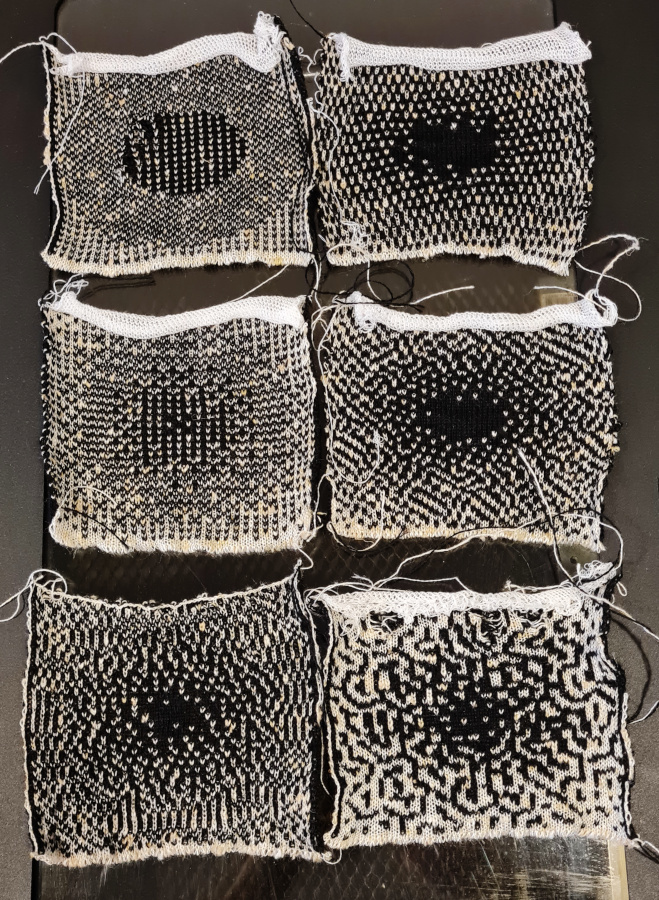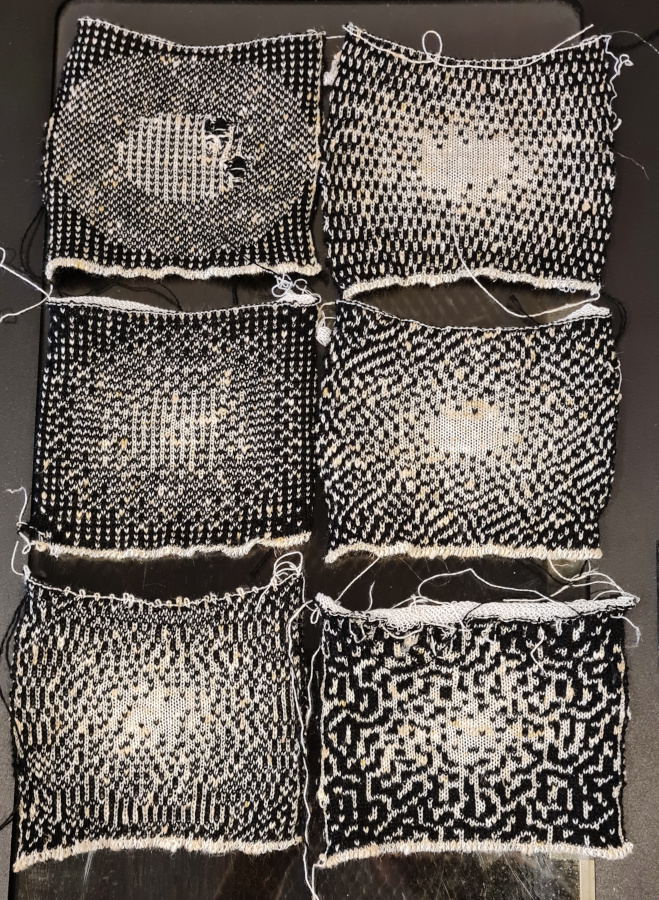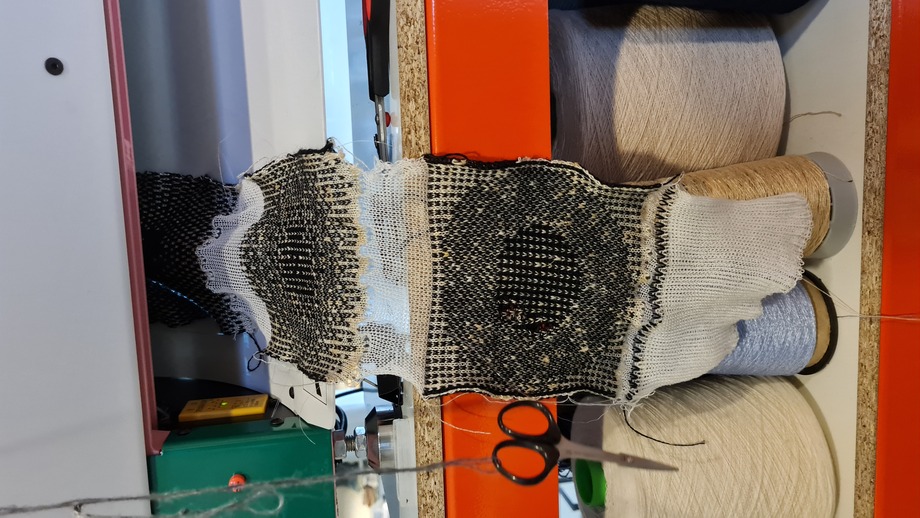Kniterate¶
In parallel to computer vision tests, I made some samples on the Kniterate, a semi-industrial knitting machine as I plan to knit my digital camouflages with this machine.
Yarns¶
Kniterate is a 7 gauge machine (7 needles per inch) and welcomes yarns from Nm6 to Nm8.
The most difficult thing to tackle with the Kniterate are yarns which will go flawlessly in the machine, either for the waste yarn (a yarn you don’t want to put too much money into) and the knit yarn. For the waste yarn, we used PLA yarns made out of corn from Noosa Fibers. After removing the waste yarn, we could potentially send them back to the company for recycling.
Birds-eye jacquard, inverted colors (full-needle rib)¶

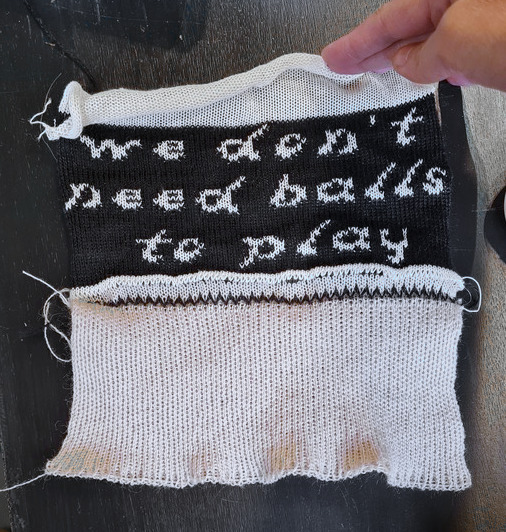
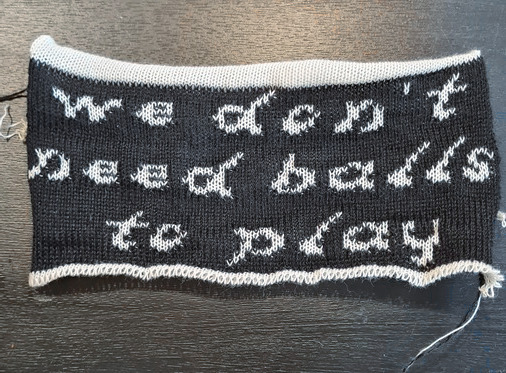

Birds-eye jacquard, 3 colours, default options¶



Birds-eye jacquard, 3 colours, Full-needle rib¶
Instagram post embedding not available.Watch it on Instagram
dithering tests¶
In the idea of making countershadows, I tried different dithering software/settings to make a radial gradient with the Kniterate.







